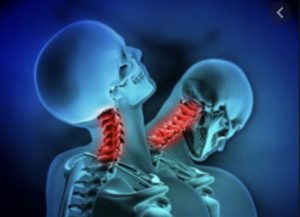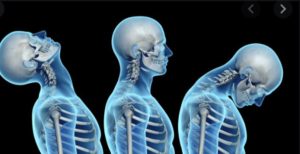How do we treat neck pain after an accident?
The Treatment of Neck Pain-Associated Disorders and Whiplash-Associated Disorders: A Clinical Practice Guideline

- PMID: 27836071
- DOI: 10.1016/j.jmpt.2016.08.007
Abstract
Objective: The objective was to develop a clinical practice guideline on the management of neck pain-associated disorders (NADs) and whiplash-associated disorders (WADs). This guideline replaces 2 prior chiropractic guidelines on NADs and WADs.
How do we treat neck pain after an accident?
Methods: Pertinent systematic reviews on 6 topic areas (education, multimodal care, exercise, work disability, manual therapy, passive modalities) were assessed using A Measurement Tool to Assess Systematic Reviews (AMSTAR) and data extracted from admissible randomized controlled trials. We incorporated risk of bias scores in the Grading of Recommendations Assessment, Development, and Evaluation. Evidence profiles were used to summarize judgments of the evidence quality, detail relative and absolute effects, and link recommendations to the supporting evidence. The guideline panel considered the balance of desirable and undesirable consequences. Consensus was achieved using a modified Delphi. The guideline was peer reviewed by a 10-member multidisciplinary (medical and chiropractic) external committee.
Results: For recent-onset (0-3 months) neck pain, we suggest offering multimodal care; manipulation or mobilization; range-of-motion home exercise, or multimodal manual therapy (for grades I-II NAD); supervised graded strengthening exercise (grade III NAD); and multimodal care (grade III WAD). For persistent (>3 months) neck pain, we suggest offering multimodal care or stress self-management; manipulation with soft tissue therapy; high-dose massage; supervised group exercise; supervised yoga; supervised strengthening exercises or home exercises (grades I-II NAD); multimodal care or practitioner’s advice (grades I-III NAD); and supervised exercise with advice or advice alone (grades I-II WAD). For workers with persistent neck and shoulder pain, evidence supports mixed supervised and unsupervised high-intensity strength training or advice alone (grades I-III NAD).
Conclusions: A multimodal approach including manual therapy, self-management advice, and exercise is an effective treatment strategy for both recent-onset and persistent neck pain.
Keywords: Chiropractic; Disease Management; Musculoskeletal Disorders; Neck Pain; Practice Guideline; Therapeutic Intervention; Whiplash Injuries.
Copyright © 2016. Published by Elsevier Inc.
What does this all mean? CORE Omaha Physical Therapy Explains…
By Dr. Mark T. Rathjen PT DPT CSCS
Omaha, Nebraska
est. 2015
The conclusion of the study states ” A multimodal approach including manual therapy, self-management advice, and exercise is an effective treatment strategy for both recent-onset and persistent neck pain.”
What does this mean? This means the best way to treat a whiplash injury its multi factorial. It will include range of motion. It will include modalities to decrease inflammation. It will include therapeutic exercise. It will include a home Exercise program. It will also include manual therapy techniques.
There is not a one size fits all type of approach. If your therapist is using this approach, find a new one. If your therapist is different every visit, find a new clinic for your treatment.
If you are an athlete at any level, you can recovery. If you are a regular person, you can recover. Your path to recovery will be different base on age, activity level, injury level, compliance level. etc.
Its up to a skilled Doctor of Physical Therapy to guide and assist your recovery.
C.O.R.E. Physical Therapy and Sports Performance PC,
17660 Wright St, Suites 9/10
Omaha, NE 68130
402-930-4027
At CORE Physical Therapy in Omaha, We specialize in the treatment of athletes. We have worked with athletes for a combined 30 years.
This is who are, This is what we do.
Owned and Operated
by
Dr. Mark Rathjen and Dr. Claire Rathjen.
CORE is a family owned business
est. 2015
We are proud to serve the greater Omaha metro area.
For More information, Please feel free to contact us https://coreomaha.com/contact/
Please feel free to follow us at https://www.facebook.com/COREomaha/
To get started https://coreomaha.com/getting-started/
For more Blog information https://coreomaha.com/blog/
Similar articles
-
Spine J. 2016 Dec;16(12):1598-1630. doi: 10.1016/j.spinee.2015.08.024. Epub 2015 Dec 17.PMID: 26707074 Review.
-
Spine J. 2016 Dec;16(12):1503-1523. doi: 10.1016/j.spinee.2014.02.014. Epub 2014 Feb 15.PMID: 24534390
-
Eur Spine J. 2016 Jul;25(7):2000-22. doi: 10.1007/s00586-016-4467-7. Epub 2016 Mar 16.PMID: 26984876 Review.
-
Spine J. 2016 Dec;16(12):1541-1565. doi: 10.1016/j.spinee.2014.06.019. Epub 2014 Jul 8.PMID: 25014556
-

